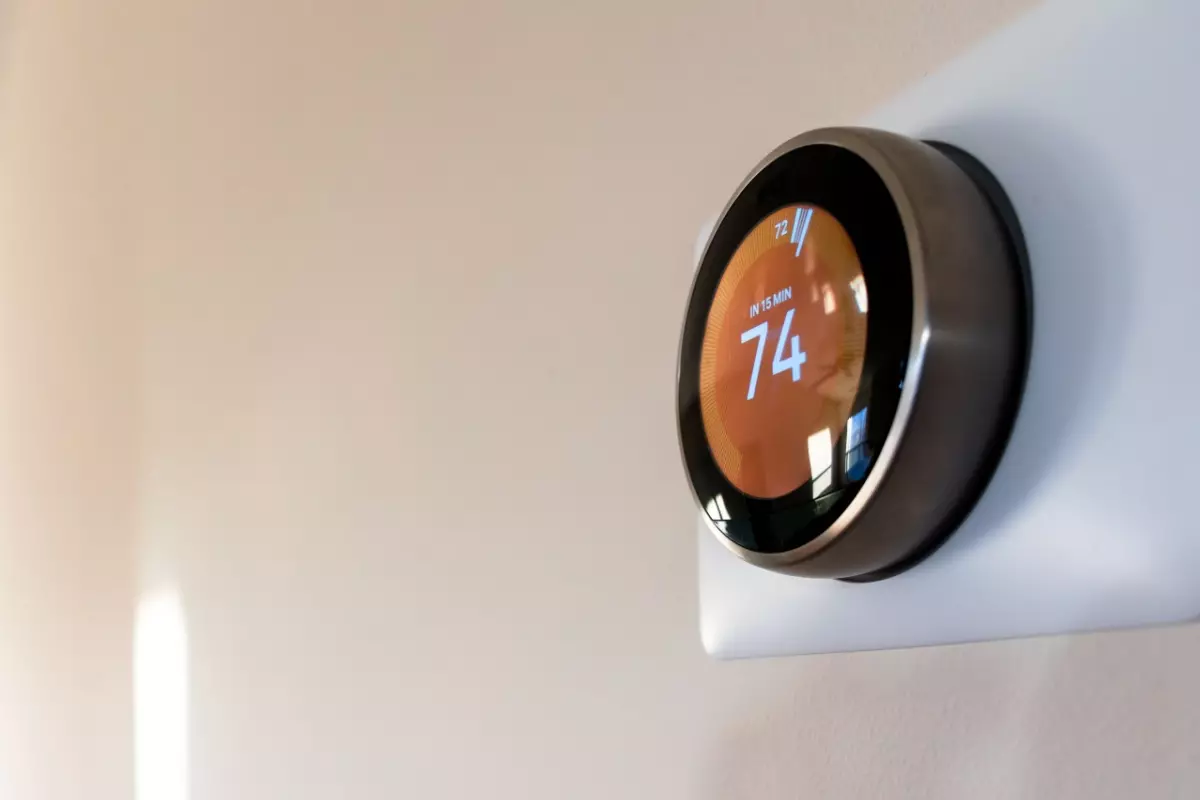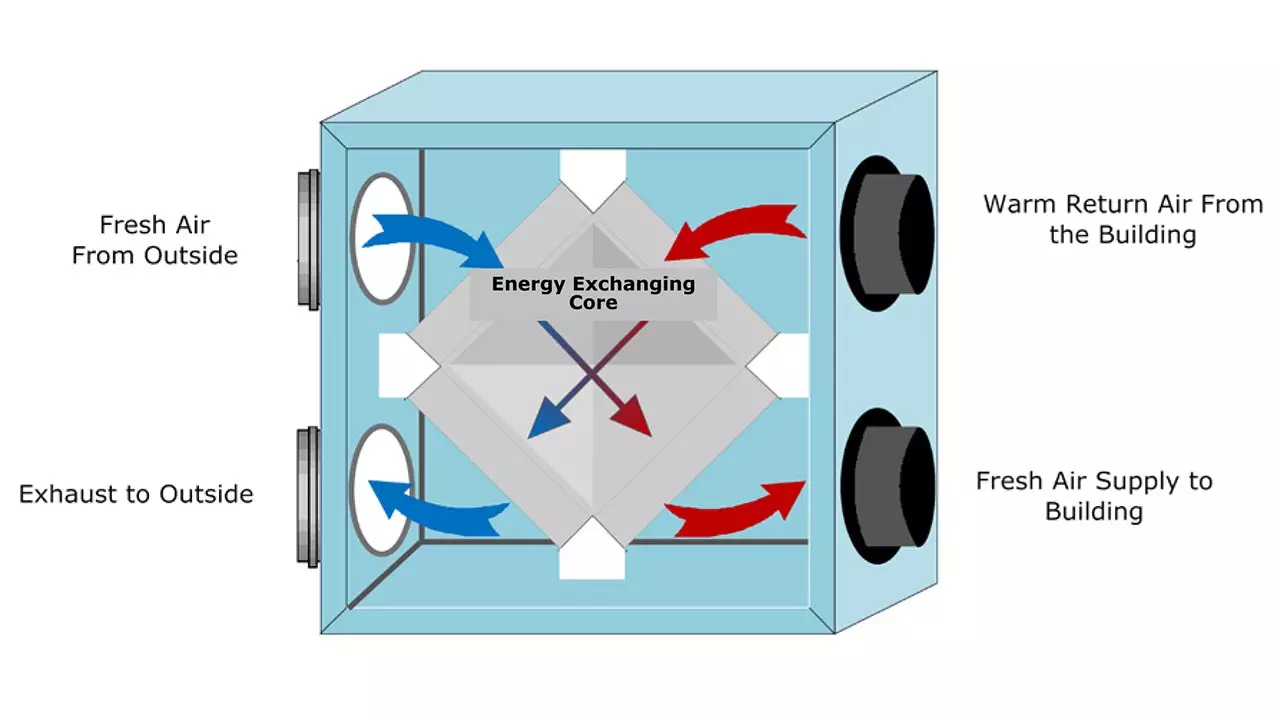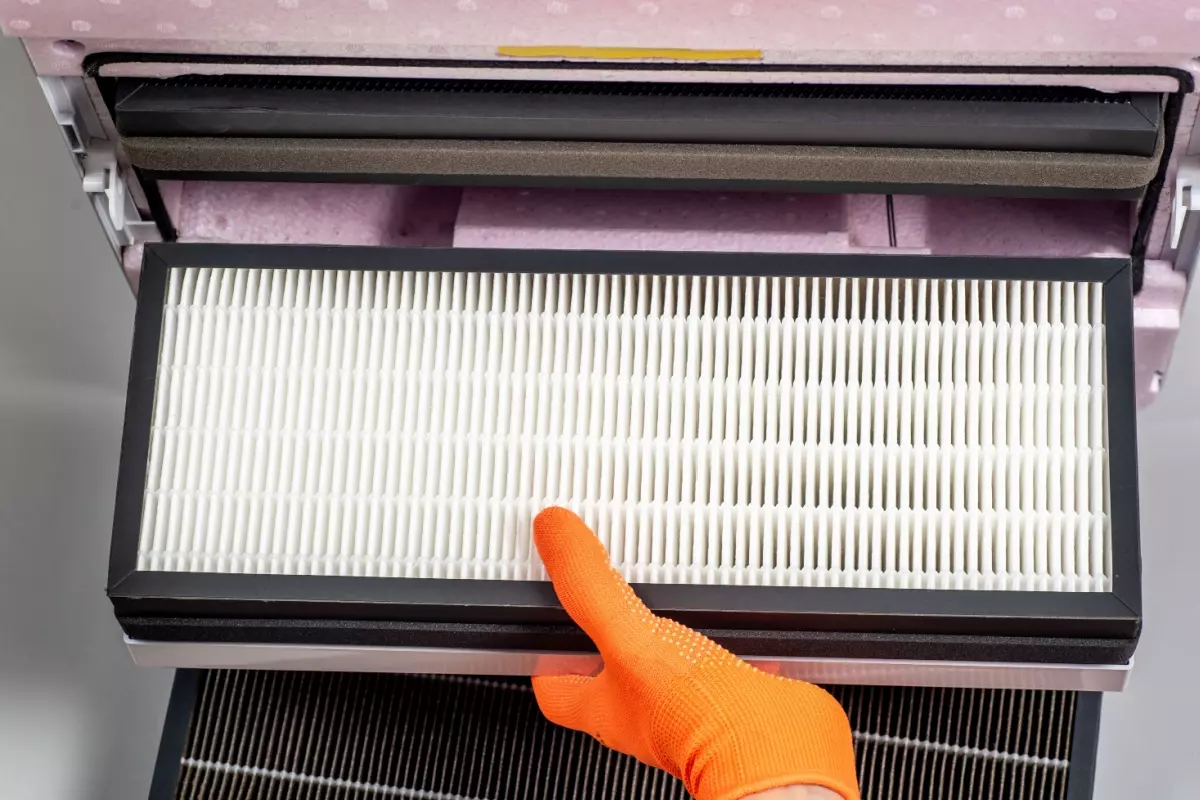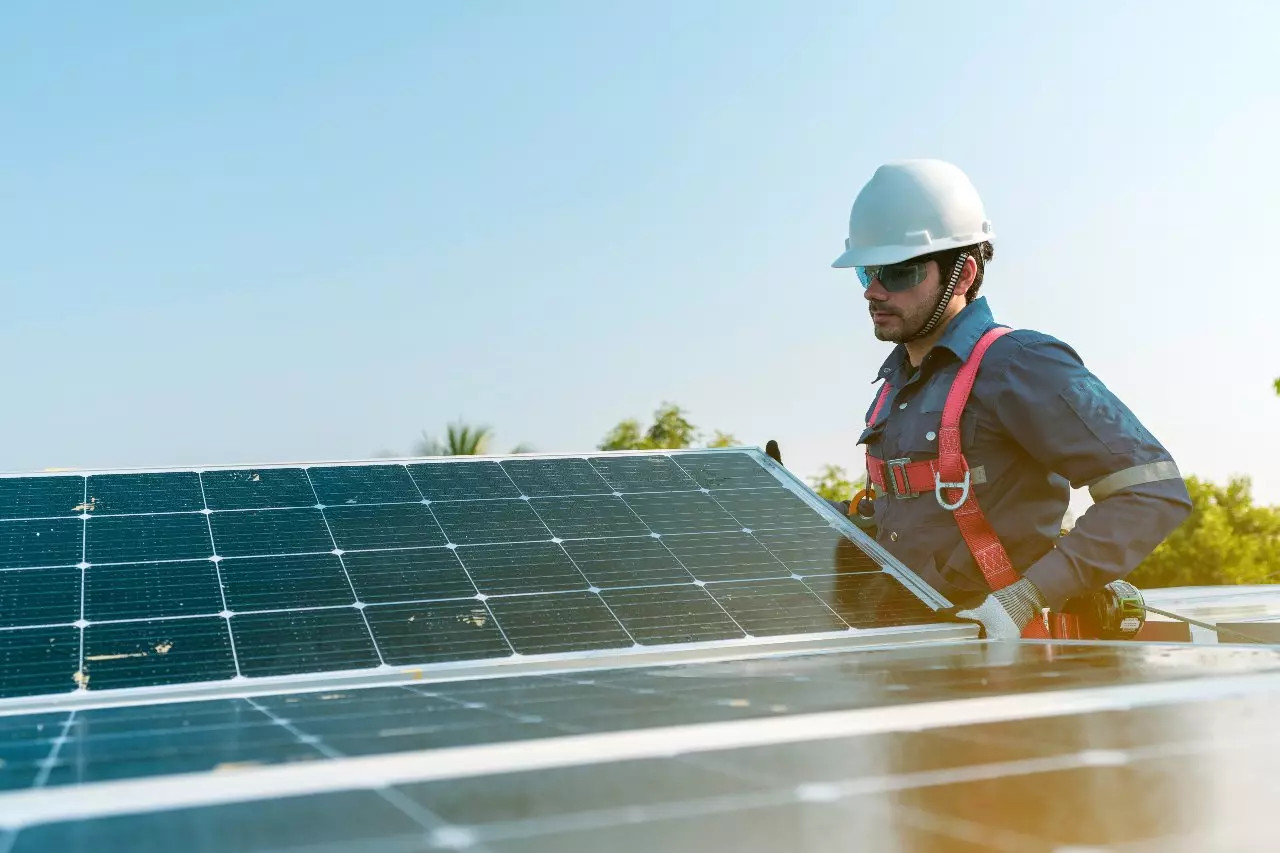Table of Contents
- HVAC Industry Statistics
- Is the HVAC Industry Growing?
- 9 HVAC Industry Trends to Watch
- Precision Indoor Climate Control (PICC) Systems
- Smart Thermostats and Vents
- Demand-Driven Ventilation (DDV) Systems
- Predictive Maintenance and AI
- Energy Recovery Ventilation (ERV) Systems
- Green Refrigeration
- HEPA Filtration and UV-C Germicidal Systems
- Geothermal Heat Pumps
- Solar HVAC Systems
- HVAC Industry Challenges
- HVAC Trends FAQ
- How Is Climate Change Impacting the HVAC Industry?
- What Is the Average HVAC Company Revenue?
- Will HVAC Prices Go Up?
- Final Thoughts
When my fiancé and I first looked to move in together, central air conditioning was at the top of our list of necessities. In Los Angeles, finding an apartment with an HVAC system was a gold mine, and we were determined not to endure another summer without one.

But we weren’t the only ones looking for this kind of amenity. To meet this demand, 91% of American homes now include air conditioning systems, underscoring its transition from luxury to fundamental necessity.
This blog highlights the latest trends in the HVAC industry, offering insights to boost your business’s efficiency and place you at the forefront of the market.
HVAC Industry Statistics
- The U.S. HVAC services market was valued at approximately $16.43 billion in 2023 and is expected to grow at a CAGR of 3.23% until 2028.
- The worldwide HVAC market is set to hit $296.92 billion by 2028, showing steady growth. From 2024 to 2028, the industry is expected to grow by 12.7%.
- Between 2022 and 2023, heating and air conditioning contractor businesses increased by 4.5%.
Is the HVAC Industry Growing?
Yes, the HVAC market is growing rapidly thanks to the increasing demand for HVAC services and systems, especially eco-friendly options and new technological developments. The HVAC industry in the U.S. is expected to grow by 6.6% from 2024 to 2029, and employment for HVAC technicians and installers is projected to grow 5% by 2031.
9 HVAC Industry Trends to Watch
While the HVAC industry is continuously growing, so are consumer demand and technological advancements offering higher degrees of automation, customization, and energy efficiency. New and established businesses must adapt to these emerging trends in the HVAC Industry and developments to stay ahead of the curve and position themselves as market leaders:
Precision Indoor Climate Control (PICC) Systems
Precision Indoor Climate Control (PICC) Systems leverage advanced sensors, algorithms, and climate control mechanisms to maintain indoor temperatures, humidity, and air quality.
Unlike traditional HVAC systems that provide uniform temperature settings, PICC systems can adjust conditions in real-time and in different zones. PICC systems aim to enhance occupant comfort while simultaneously improving energy efficiency.
PICC systems consistently maintain optimal air quality and climate conditions, resulting in a more comfortable living or working space. Because these systems operate more efficiently, users often notice reduced energy bills as PICC systems eliminate unnecessary heating, cooling, and ventilation.
By integrating PICC technology, businesses can not only provide a superior, customizable product to their customers but also align with growing demands for sustainable and energy-efficient solutions.
Smart Thermostats and Vents
Unlike PICC systems that focus on overall climate control, smart thermostats and vents are intelligent devices that learn from the users’ habits and preferences to adjust temperature and usage automatically. They can be controlled remotely via smartphones and provide detailed reports on energy usage, highlighting opportunities for savings.

By allowing users to adjust conditions on a room-by-room basis, these systems ensure that energy is not wasted on unoccupied spaces or areas that do not require climate adjustment. This approach aligns with the increasing demand for sustainable living solutions and offers a customizable experience that PICC systems might not fully address at the individual room level.
For consumers, there is the potential for significant cost savings on energy bills through more efficient HVAC usage. Secondly, the enhanced control over environmental conditions offers automation and personalization, contributing to better comfort.
Similar to the business-related benefits of PICC systems, smart thermostats and vents also meet the market’s growing expectation for smart, energy-efficient home solutions. Adopting such technologies can help businesses attract new leads, increase conversions, and generate higher revenue by offering cutting-edge solutions that promise convenience, efficiency, and customization.
Demand-Driven Ventilation (DDV) Systems
DDV systems optimize air quality and comfort by automatically adjusting ventilation based on need. These systems use sensors to detect occupancy and air quality indicators such as carbon dioxide levels, adjusting the airflow accordingly.
By dynamically responding to the specific demands of each space, DDV systems can significantly reduce energy consumption compared to traditional ventilation systems that operate on a fixed schedule. This responsiveness to real-time conditions supports the trend toward sustainability and may provide a healthier indoor environment by maintaining optimal air quality levels.
The ability to adjust ventilation based on occupancy and air quality means that consumers can enjoy a comfortable and healthy indoor environment without unnecessary energy expenditure. By offering DDV solutions, companies can cater to customers prioritizing energy-efficient technologies, sustainability, and wellness.
Predictive Maintenance and AI
To ensure these automated systems maintain operational efficiency, the HVAC industry also embraces predictive artificial intelligence (AI) to analyze data from HVAC systems in real time.
Predictive AI utilizes sensors and smart algorithms to monitor system performance, anticipate maintenance needs, and optimize energy consumption. Predictive AI aims to enhance system efficiency, reduce unexpected downtime, and extend the lifespan of HVAC equipment.
Offering services that include remote diagnostics allows companies to identify and resolve issues, often without on-site visits. Energy consumption analytics provide valuable insights into how systems can be adjusted for better efficiency. At the same time, automated service scheduling ensures that maintenance is performed at the optimal time without the need for manual intervention.
By integrating predictive AI into their offerings, HVAC companies can offer a more advanced, efficient, and customer-friendly service. It also enables businesses to build stronger relationships with their clients through improved reliability and performance of their HVAC systems. As a result, HVAC professionals can expect increased customer satisfaction, loyalty, and, potentially, a higher rate of referrals – key components for long-term business success in a competitive market.
Energy Recovery Ventilation (ERV) Systems
To further meet the market demand for more energy-efficient HVAC options, ERV systems emerged to improve indoor air quality and comfort while minimizing energy use and reducing operating costs. ERV systems capture energy from exhausted air and use it to treat (precondition) the incoming outdoor ventilation air.

During warmer months, the system pre-cools and dehumidifies; during cooler months, it preheats and humidifies. This process significantly reduces the energy required to bring outside air to a comfortable temperature and humidity level. ERV systems maintain comfortable air by retaining energy that would otherwise be lost in the ventilation process, making them more sustainable and efficient.
Like the emerging HVAC market trends mentioned previously, ERV systems also improve comfort and air quality and can contribute to substantial savings on heating and cooling expenses. By using energy more efficiently, ERV systems can significantly lower buildings’ energy consumption, making them eco-friendly and more cost-effective.
The national average cost for installing an ERV system is approximately $2,000, with a typical price range between $1,500 and $2,000.
As energy efficiency and sustainability continue to be top priorities for both residential and commercial clients, ERV systems represent a cutting-edge solution that can meet these demands. This expertise can lead to increased business opportunities as clients look for knowledgeable providers who can help them achieve their energy efficiency goals.
Green Refrigeration
To improve air quality on a broad scale, green refrigeration is gaining traction to combat the environmental impact of refrigerants. Green refrigeration uses natural refrigerants, like ammonia, carbon dioxide, and hydrocarbons, which have a significantly lower global warming potential (GWP) than traditional hydrofluorocarbon (HFC). These refrigerants are key to reducing the environmental footprint of cooling systems in commercial, industrial, and residential settings.
The goal of green refrigeration is to minimize the impact of climate change by adopting refrigerants that do not contribute to global warming and ozone depletion. This shift is becoming a new trend as the HVAC industry responds to regulatory pressures and increasing consumer demand for sustainable practices. Regulations aimed at reducing HFC emissions are being introduced globally, with agreements such as the Kigali Amendment to the Montreal Protocol calling for significant cuts in the production and use of high-GWP refrigerants.
By aligning with global efforts to reduce HFC emissions, HVAC professionals can enhance their brand reputation, attract new customers looking for environmentally responsible service providers, and comply with regulatory requirements, avoiding potential penalties.
HEPA Filtration and UV-C Germicidal Systems
To further cater to health-conscious consumers, HEPA filtration and UV-C germicidal systems are designed to complement existing ventilation and climate control solutions by providing a high level of air purification. HEPA filters can capture 99.97% of airborne particles, including dust, pollen, mold, and bacteria, as small as 0.3 microns.

Meanwhile, UV-C germicidal lamps emit ultraviolet light that inactivates viruses, bacteria, and other pathogens, effectively sterilizing the air and surfaces within ventilation systems.
Integrating HEPA filtering and UV-C germicidal systems significantly improves indoor air quality and creates healthier living and working environments. This trend is gaining momentum as public awareness of airborne health risks increases and as people seek out more rigorous standards for indoor air quality in homes, offices, and public spaces.
For HEPA filtration and UV-C germicidal systems, installing a whole-house air purifier system costs $1,000 to $4,000. The system alone costs $600 to $3,000.
For HVAC professionals and businesses, offering HEPA filtration and UV-C germicidal systems helps tap into a growing market focused on health and wellness. The adoption of these systems enables businesses to contribute to public health and safety while also capitalizing on the increasing HVAC demand for air quality solutions.
Geothermal Heat Pumps
Another eco-friendly heating and cooling solution that drastically reduces energy consumption and greenhouse gas emissions includes geothermal heat pumps. These heat pumps use the stable temperatures just below the Earth’s surface to heat and cool buildings.
Circulating water or refrigerant through underground pipes absorbs heat from the ground to warm a building during colder months and extracts heat from a building to cool it during warmer months. This process leverages the constant ground temperature to provide highly efficient heating and cooling, significantly reducing energy use compared to conventional HVAC systems.
Geothermal heat pumps offer consumers lower operating costs, longer system lifespans, and reduced environmental impact, making them an attractive option for those seeking to reduce their carbon footprint and energy bills.
A geothermal heat pump installation costs, on average, between $15,000 and $35,000, depending on system size and loop type.
By specializing in GHP installations, companies can tap into a niche market of environmentally conscious consumers and commercial clients looking to invest in long-term, sustainable climate control solutions.
Furthermore, as the industry continues to evolve with a focus on reducing environmental impact, HVAC companies adept at installing and maintaining GHPs can expect an increase in demand. This positions them as leaders in the adoption of sustainable technologies, enhancing their reputation and opening up new opportunities for revenue.
Solar HVAC Systems
Following the trend toward sustainable climate solutions like GHPs, the HVAC industry is also harnessing the power of the sun with solar HVAC systems. Solar panels capture energy from the sun that is then used to power traditional heating, ventilation, and air conditioning units.

Solar HVAC systems reduce reliance on traditional electricity or fossil fuels by utilizing a renewable energy source, resulting in lower energy costs. These systems can directly power HVAC units or charge batteries that supply power when sunlight is unavailable, ensuring a consistent energy supply.
The average cost of installing a solar heating system ranges between $12,000 and $30,000. For instance, the setup for a 1,500-square-foot home might need 15 to 18 solar panels, costing between $7,000 and $9,000, excluding labor. The labor for a 6 kW system ranges around $3,000, with additional expenses like mountings, inverters, inspection fees, and local permit fees bringing the total to between $16,000 and $18,000 before tax incentives.
Consumer benefits include significant reductions in energy bills due to decreased consumption of grid electricity, improved environmental impact through the use of clean energy, and potential incentives or rebates offered for solar energy installations. For HVAC businesses, embracing solar HVAC systems offers an opportunity to lead in the green technology space.
HVAC Industry Challenges
While these emerging technologies open the door for increased average order value (AOV) and HVAC business growth, there are some factors to consider before adopting them. Here are some challenges the HVAC industry faces:
- Skilled Labor Shortage: This shortage makes recruiting HVAC technicians even more challenging, as fewer young people are entering the trades, reducing the pool of qualified candidates with the necessary licenses and certifications, technical knowledge, and hands-on experience.
- Regulatory Changes: HVAC businesses must keep up with evolving regulations focused on energy efficiency and environmental protection, such as updates to the International Energy Conservation Code (IECC), the Leadership in Energy and Environmental Design (LEED), and the phasedown of HFCs. Adapting to these changes requires ongoing updates to equipment and practices.
- Technological Advancements: Incorporating new technologies into HVAC systems requires substantial investment in training, tools and equipment, and system updates. While necessary for competitiveness, the financial and resource commitment can be significant.
- Customer Expectations: Modern customers demand efficient, reliable, and sustainable HVAC systems. Meeting these expectations requires continuous improvement in technology and services, demanding investments in new systems and technician training.
- Competition: With a growing number of HVAC companies, standing out requires continuous innovation, adoption of the latest trends, and exceptional financing solutions for HVAC customers and services to differentiate in a saturated market.
- Supply Chain Disruptions: Unpredictable availability of equipment and parts can lead to service delays and increased costs, affecting customer satisfaction and operational efficiency.
HVAC Trends FAQ
Let’s answer the most frequently asked questions about HVAC industry trends, providing insights that matter to you.
How Is Climate Change Impacting the HVAC Industry?
Climate change is significantly influencing the HVAC industry by increasing the demand for systems that are more efficient and adaptable to extreme weather conditions. This shift drives innovation in eco-friendly and energy-saving HVAC solutions as businesses and consumers seek to reduce their carbon footprint while ensuring comfort and resilience against changing climate patterns.
What Is the Average HVAC Company Revenue?
The average HVAC company’s revenue largely depends on its size and location. Most HVAC companies make less than $1 million in annual revenue on average. Typically, HVAC business owners make around $86,197 annually.
Will HVAC Prices Go Up?
Yes, HVAC prices are expected to increase up to 12% from early 2024. Several leading HVAC manufacturers have announced price hikes due to supply chain issues, inflationary pressures, and increases in material and operational costs.
Final Thoughts
As the HVAC industry continues to grow, harnessing the power of advanced technologies and sustainable practices becomes indispensable for businesses aiming to excel. Embracing innovative HVAC trends and solutions such as smart HVAC systems and green technologies sets the stage for energy efficiency and caters to the modern consumer’s demands for eco-friendly options.
Table of Contents
- HVAC Industry Statistics
- Is the HVAC Industry Growing?
- 9 HVAC Industry Trends to Watch
- Precision Indoor Climate Control (PICC) Systems
- Smart Thermostats and Vents
- Demand-Driven Ventilation (DDV) Systems
- Predictive Maintenance and AI
- Energy Recovery Ventilation (ERV) Systems
- Green Refrigeration
- HEPA Filtration and UV-C Germicidal Systems
- Geothermal Heat Pumps
- Solar HVAC Systems
- HVAC Industry Challenges
- HVAC Trends FAQ
- How Is Climate Change Impacting the HVAC Industry?
- What Is the Average HVAC Company Revenue?
- Will HVAC Prices Go Up?
- Final Thoughts


